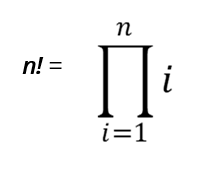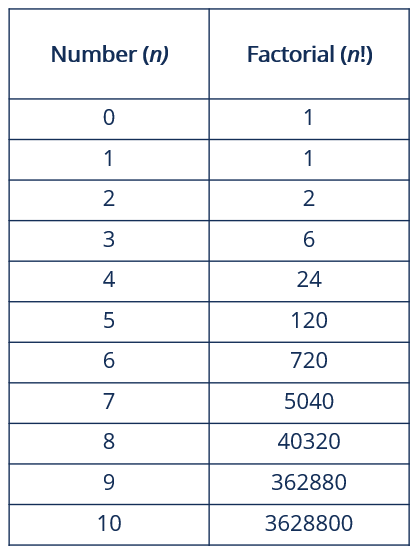Factorial
The product of all the positive numbers preceding or equivalent to the positive integer
What is Factorial?
The factorial (denoted or represented as n!) for a positive number or integer (which is denoted by n) is the product of all the positive numbers preceding or equivalent to n (the positive integer). The factorial function can be found in various areas of mathematics, including algebra, mathematical analysis, and combinatorics.
Starting in the 1200s, factorials were used to count permutations. The notation for a factorial (n!) was introduced in the early 1800s by Christian Kramp, a French mathematician.
The factorial formula can be seen below:

Summary
- The factorial (denoted or represented as n!) for a positive number or integer (which is denoted by n) is the product of all the positive numbers preceding or equivalent to n (the positive integer).
- In mathematics, there are a number of sequences that are comparable to the factorial. They include Double Factorials, Multi-factorials, Primorials, Super-factorials, and Hyper-factorials.
- The factorial of 0 is equal to 1 (one).
Defining the Factorial
The function of a factorial is defined by the product of all the positive integers before and/or equal to n, that is:
n! = 1 ∙ 2 ∙ 3 ∙∙∙ (n-2) ∙ (n -1) ∙ n,
when looking at values or integers greater than or equal to 1. It can then be written as:

The equation above is written according to the pi product notation and results in the recurring relation seen below:
n! = n ∙ (n – 1) !.
Some examples of the notation can be seen below:
- 4! = 4 ∙ 3!
- 7! = 7 ∙ 6!
- 80! = 80 ∙ 79!, etc.
Factorial Table
The table below gives an overview of the factorials for integers between 0 and 10:

Factorial of 0 (Zero)
It is widely known that the factorial of 0 is equal to 1 (one). It can be denoted as:
0! = 1
There are several reasons to justify the notation and definition stipulated above. Firstly, the definition provides an allowance for a compact expression of a considerable number of formulae, including the exponential function, and the definition creates an extension of the recurrence relation to 0.
In addition, where n = 0, the definition of its factorial (n!) encompasses the product of no numbers, meaning that it is equivalent to the multiplicative identity in broader terms.
Moreover, the definition of the zero factorial includes only one permutation of zero or no objects. Lastly, the definition also validates a number of identities in combinatorics.
Definitions to Note in Relation to the Zero Factorial
- Combinatorics: An area in mathematics that focuses on counting.
- Permutation: In mathematics, permutation refers to the arrangement of the members of a set into a linear order or sequence.
- Recurrence relation: Recurrence relation, in mathematics, refers to an equation that defines a sequence or vast array of values recursively. Recursion means defining something in terms of itself.
Various Applications for the Factorial Function
The factorial function can be found in various fields of mathematics. Firstly, there are n! distinguished ways to arrange n specific objects into a sequence. Also, factorials can be used to account for the ignorance or disregard of ordering in a formula by serving as a denominator.
Factorials also occur in algebra via the binomial theorem and in calculus, where they occur in the denominators of Taylor’s formula. Furthermore, a factorial can be found in the theories of probability and numbers, and they can be used to enable the manipulation of expressions.
Other Sequences Similar to the Factorial
In mathematics, there are a number of sequences that are comparable to the factorial. They include:
- Double Factorials, which are used to simplify trigonometric integrals.
- Multi-factorials, which can be denoted with multiple exclamation points.
- Primorials, which entail getting the product of the prime numbers, which are less than or equal to n.
- Super-factorials, which are defined as the product of the first n factorials.
- Hyper-factorials, which are a result of multiplying a number of consecutive values ranging from 1 to n.
Additional Resources
In order to help you become a world-class analyst and advance your career to your fullest potential, these additional resources will be very helpful: